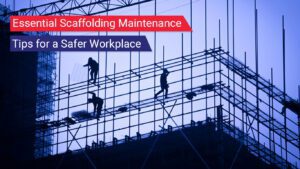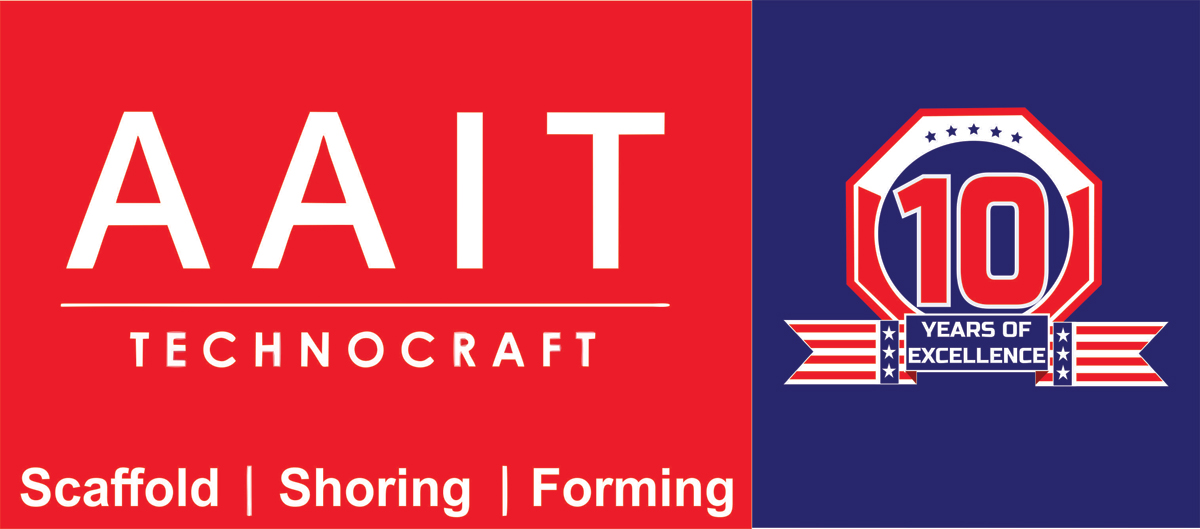
Safety and proper maintenance are paramount in the construction industry. Among the various tools used on construction sites, scaffolding stands out as a crucial component. Almost every worker relies on scaffolding to carry out their tasks.
Therefore, understanding the best scaffolding maintenance practices is essential to ensure the scaffold equipment’s longevity and the safety of your workers.
In this article, we’ll delve into how to maintain your scaffold equipment, keeping it functional and secure throughout your project. Read on to learn more!
Scaffold Maintenance Tips: Extending the Lifespan of Your Equipment
Regular maintenance not only preserves scaffold but also ensures your workers’ safety and cost-effective construction.
Don’t underestimate its importance and check out some of the tips for scaffolding maintenance:
1. Clean Scaffolding Equipment Before Storage
- Properly cleaning your scaffolding equipment after every use is a fundamental practice.
- This is particularly critical for scaffolding, as materials like stucco, mud, paint, wet cement, tar, and others can easily spill and coat the equipment.
- If left unattended, these materials can harden and potentially damage your scaffolding.
- Before cleaning your scaffolding, it’s crucial to dismantle it completely, allowing for thorough dirt removal.
- Consider using a power washer to easily remove stubborn dirt and debris. In cases where a power washer falls short, sandpaper or a sander can be used effectively.
2. Dismantle, Stack, and Rack Correctly
- Once your scaffolding is properly cleaned, it’s vital to store the parts in a location that is protected from heat, humidity, and other environmental elements when not in use.
- Incorrect storage can accelerate the deterioration and corrosion of metal components.
- Despite the time-consuming and tiring nature of dismantling and storing scaffolding, it’s essential not to rush this process.
- Carelessness can lead to dents, improper storage, and additional costs for replacements and repairs.
- To mitigate these risks, ensure your workers are trained to dismantle and store scaffolding correctly.
- Temporary storage solutions, depending on your project, should avoid stacking pieces in ways that could lead to dents or bending.
- Proper training should also include organizing parts for easy retrieval and assembly when needed.
3. Use WD-40 to Prevent Rust and Deterioration
- As mentioned earlier, scaffolding is exposed to the elements during construction, which can lead to wear and corrosion.
- Fortunately, you can provide extra protection to prolong the functionality and safety of your scaffolding despite this exposure.
- This can be achieved through the application of WD-40 or similar metal lubricants.
- By lubricating the bolts, nuts, and other moving and detachable components, you shield them from rust and deterioration, extending their lifespan.
- Lubrication also reduces friction between components, enhancing the scaffolding’s sturdiness and safety, ensuring the scaffold remains dependable throughout the project.
4. Keep Wood and Moving Parts Covered
- While scaffolding is primarily composed of steel and other metals, it also incorporates wooden components, such as planks used to create platforms and support for workers.
- Unlike metal, wood is vulnerable to warping and rot when exposed to moisture, and smaller metal parts like bolts and nuts are prone to rust and corrosion when left in the rain.
- To prevent these issues, always keep your scaffolding covered when not in use. Store the equipment in a shaded area or use tarps to provide temporary cover.
5. Replace Any Faulty or Worn Parts
Despite scaffolding equipment being constructed from robust and durable materials, wear and faults are inevitable due to the heavy loads and high traffic experienced.
During the dismantling and cleaning process, take the opportunity to inspect each part to identify those that are still usable and those that pose safety hazards.
Look out for parts exhibiting bending, splitting, or other signs of wear and tear, as well as cracks or breakages in weld areas.
How to Address Faulty or Damaged Scaffolding
Upon identifying faulty or damaged parts in your scaffolding, you have several options for remediation:
- Replacement: For extensively damaged parts, replacement may be necessary, or it may be time to invest in a new scaffolding set.
- Downgrading: If the damage is isolated and doesn’t affect the entire part, consider repurposing it for another use. For example, a deformed metal plank can be cut and remade into a soleplate.
- Scrapping: If downgrading isn’t feasible, scrap the damaged parts.
- Repair: Some faults can be repaired, reducing the need for replacements. Techniques like welding and re-binding can be employed to restore faulty parts to a usable state.
- Reduction in Length: In some cases, parts can be salvaged by cutting and reshaping them. For instance, a tube with damaged ends can be shortened to eliminate the flawed sections.
Key Takeaways
Scaffolding maintenance isn’t just about extending the lifespan of your equipment; it’s about ensuring a safe and productive work environment for your construction team.
Adhering to these maintenance tips ensures that your scaffolding remains in optimal condition, safeguarding your workers and reducing unnecessary construction costs.
For those in the construction industry, proper scaffolding maintenance is an indispensable part of everyday operations.
It’s about creating a foundation of safety and efficiency that allows for the successful completion of projects.
Partnering with the Right Supplier
Choosing a reputable supplier for scaffolding equipment and accessories is just as crucial as maintaining your equipment.
Trusted suppliers offer quality materials and often provide advice on best practices for maintenance and safety.
AAIT Technocraft is a leading name in this domain, renowned for supplying top-notch scaffolding equipment and accessories across the USA.
With their premium-quality products and unmatched expertise, they stand as a beacon for those seeking the best in the scaffolding world.
When considering purchasing or replacing scaffolds, turning to industry leaders like AAIT Technocraft ensures that you’re getting the best value and quality for your investment.
Scaffolding maintenance is non-negotiable for those in the construction sector.
Following these essential tips and partnering with esteemed suppliers like AAIT Technocraft ensures that safety and efficiency remain at the forefront of your construction projects.












 Download
Download
Comments are closed